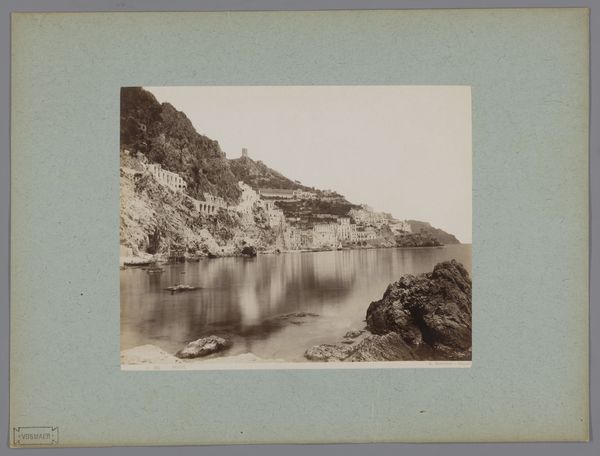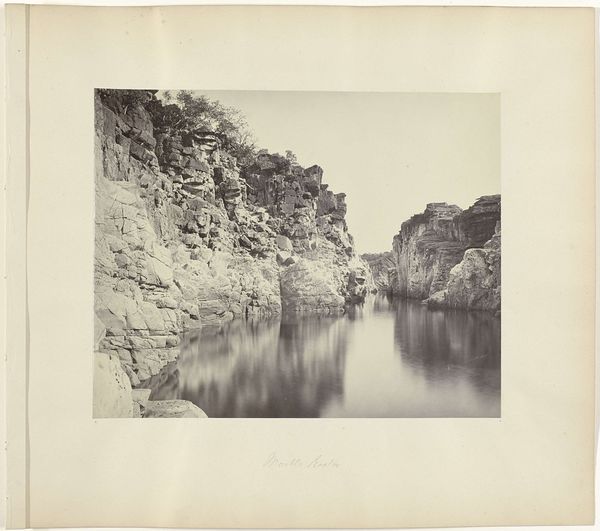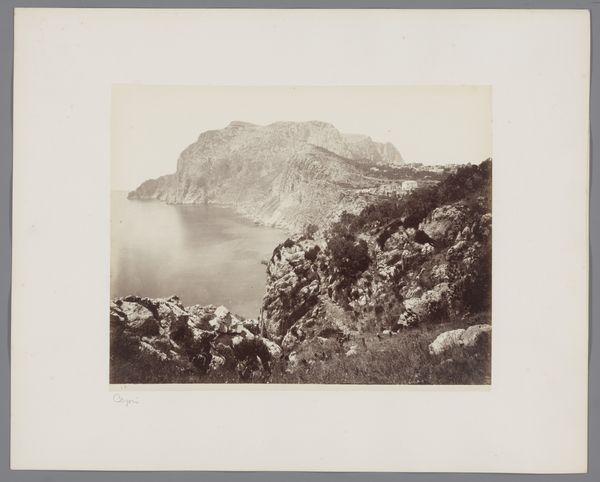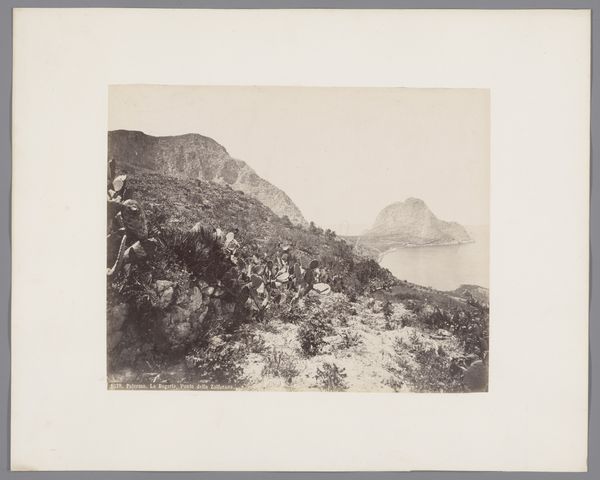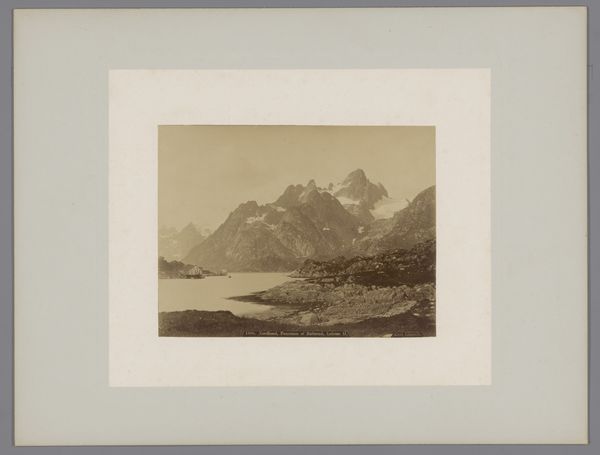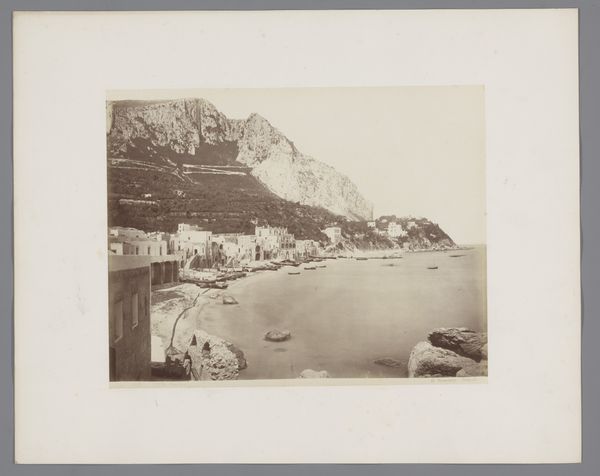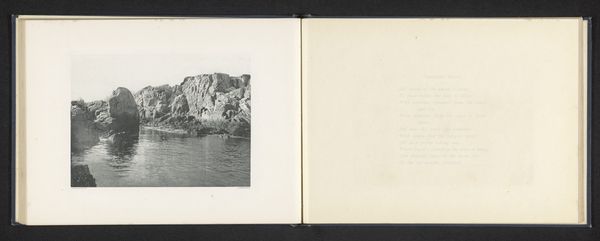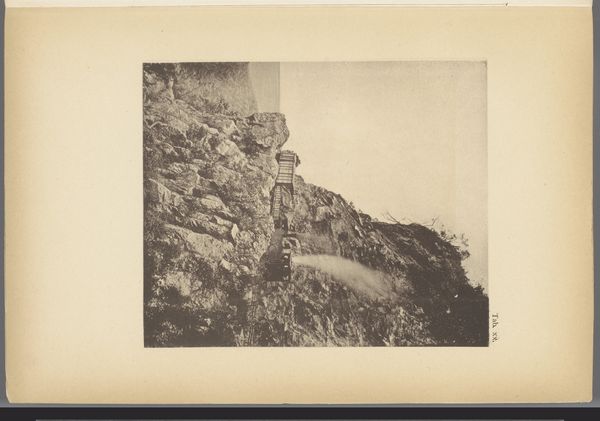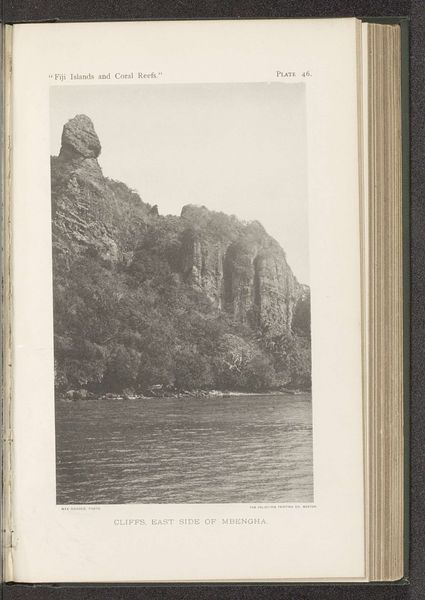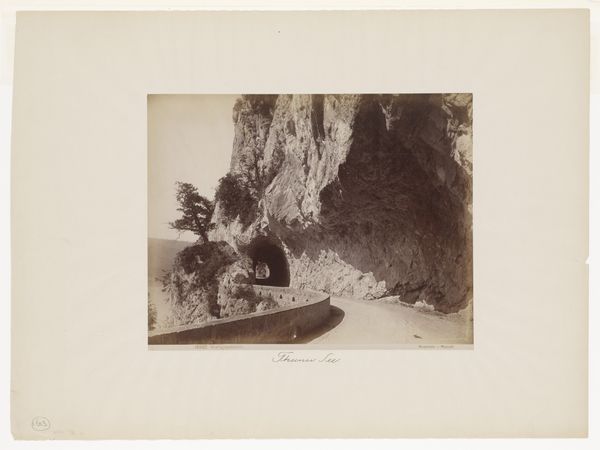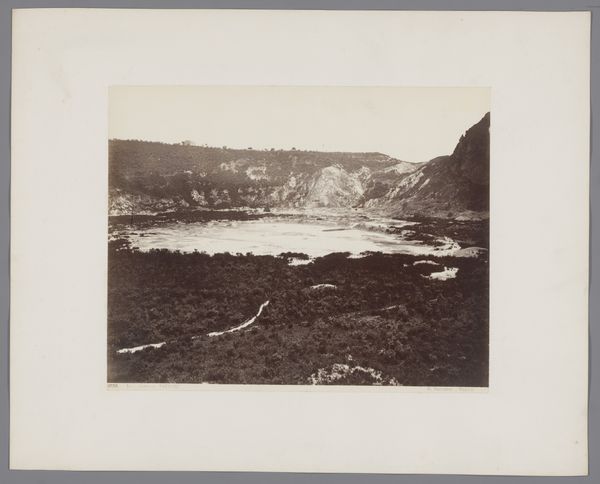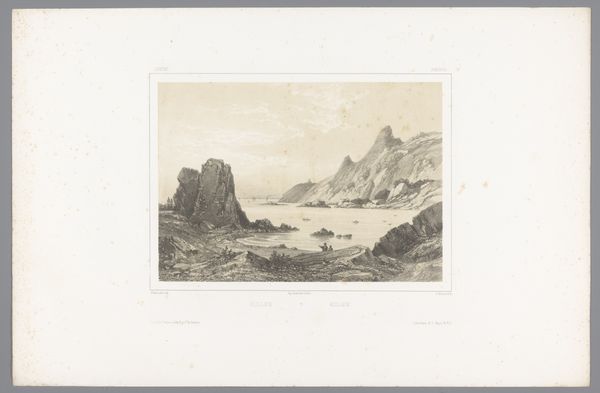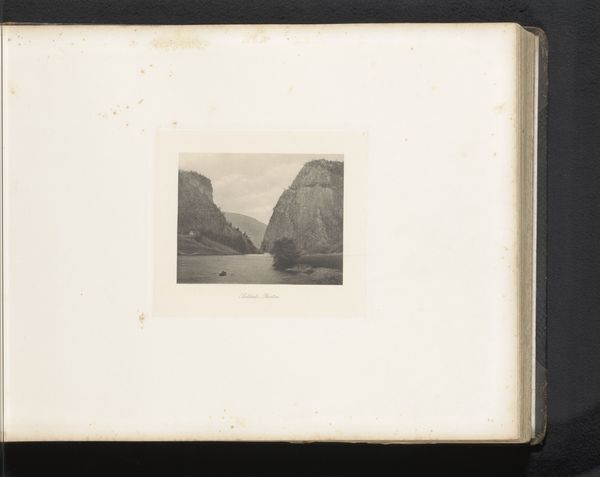
plein-air, photography
#
pictorialism
#
plein-air
#
landscape
#
photography
#
realism
Dimensions: height 310 mm, width 384 mm
Copyright: Rijks Museum: Open Domain
Editor: This is "View of the Faraglioni off the Coast of Capri, Italy," taken sometime between 1873 and 1914 by Giorgio Sommer. It's currently at the Rijksmuseum. I'm really struck by how the sharp details of the rocks contrast with the softness of the sea and sky. How do you interpret this work in terms of its formal elements? Curator: I am drawn to how the composition guides our gaze. Notice the layering effect—the rocky outcrop in the foreground leads us to the Faraglioni stacks in the mid-ground, before resolving into the expansive flat plane of sea and sky. Editor: It does feel like you are drawn into the image, but it also feels still or static? Is that intentional, or due to limitations with early photography? Curator: The stillness is, I think, intrinsic to Sommer's compositional choices. Observe how he balances light and shadow, especially on the surfaces of the rocks. The absence of movement invites prolonged visual engagement and allows careful observation of tonality and texture. Do you notice how that lower left tonal area contains and nearly obscures a human figure, for example? Editor: Yes, the figure almost blends into the landscape! That definitely contributes to that feeling of stillness. And, now that you point out, it also contrasts with verticality of the rocks? Curator: Precisely! We may consider it semiotically. The vertical and horizontals planes create both dynamism and quiescence, the subject and object both co-existing. Do you agree? Editor: I do. I initially focused on the overall image but your explanation of form highlights these subtler aspects that really shape my understanding. Thank you! Curator: Indeed. It’s through this careful attention to form that the work transcends being a mere depiction of place, becoming instead a study in contrasts, scale, and pictorial space.
Comments
No comments
Be the first to comment and join the conversation on the ultimate creative platform.
